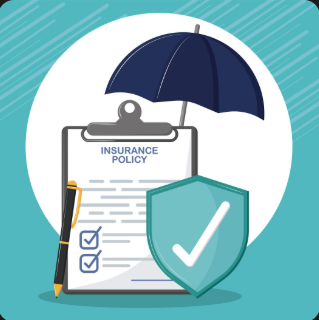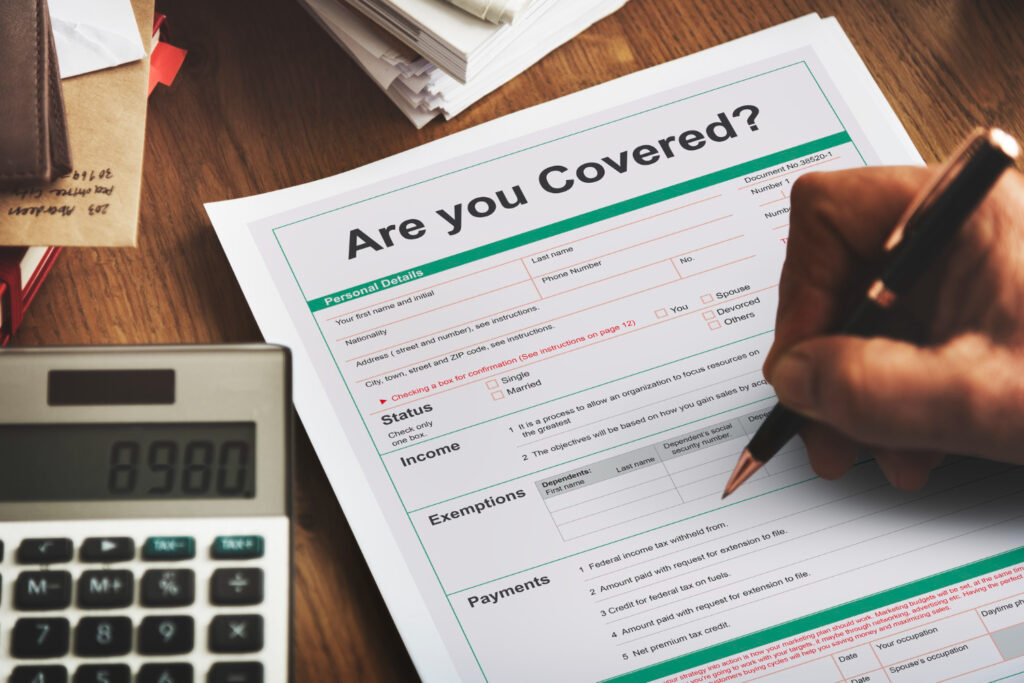Life insurance doesn’t always need to be a 30-year commitment. Sometimes you need cover for a specific period—while paying off a car, covering a home loan, or protecting your family until your kids finish university. That’s where short-term life insurance comes in, and it’s solving problems for thousands of South Africans who need flexible, affordable protection.
The South African life insurance market has shifted dramatically in recent years. According to 2024 industry data, 42% of new life policies sold are now term-based rather than whole-of-life products. People want cover that matches their actual needs, not one-size-fits-all solutions that drain their budgets for decades.
What Short-Term Life Insurance Actually Means
Let’s clear up confusion right away. In South Africa, “short-term insurance” typically refers to car and home insurance—things with a 12-month policy period. But short-term life insurance (also called term life insurance) means life cover for a fixed period, usually 5 to 30 years.

You pay premiums for the chosen term. If you pass away during that period, your beneficiaries receive the payout. If you outlive the term, the policy ends and there’s no payout. Simple concept, but incredibly useful for specific situations.
This differs from whole life insurance, which covers you until death regardless of when that happens, and funeral insurance, which specifically covers burial costs. Term life insurance provides a lump sum that beneficiaries can use for anything—settling debts, replacing lost income, funding education, or covering daily expenses.
Why South Africans Are Choosing Term Life Cover
It’s Significantly Cheaper
The cost difference is substantial. A healthy 35-year-old non-smoker wanting R2 million cover would pay approximately R180-250 monthly for 20-year term insurance. That same person would pay R800-1,100 monthly for whole life cover providing the same payout.
You’re paying for coverage only during the years you actually need it. No cash value accumulation, no investment component—just pure protection. For families on tight budgets, this affordability makes the difference between having cover and having nothing.
It Matches Real Financial Obligations
Most major debts have defined timelines. Your home loan runs for 20 years. Your car finance lasts 5-6 years. Your kids need financial support until they’re around 25. Term insurance lets you align cover with these obligations.
Take a 40-year-old with a R1.8 million home loan and 15 years remaining. A R2 million term policy for 15 years ensures the home is paid off if something happens. Once the mortgage is cleared, the need for that specific cover disappears.
You Can Adjust as Life Changes
Life insurance needs aren’t static. When you’re 30 with two small children and a massive bond, you need substantial cover. At 55 with the house paid off and kids financially independent, your needs are completely different.
Term policies acknowledge this reality. You can take out multiple term policies for different purposes—one matching your bond term, another covering your kids’ education years, perhaps a third for your vehicle finance. As each obligation ends, that policy lapses and you stop paying.
No Confusion About What You’re Buying
Whole life and endowment policies often combine insurance with investment, creating complicated products where it’s hard to see what you’re actually getting. Term insurance is transparent: you pay R200 monthly, you get R1.5 million cover for 15 years. That’s it.
This clarity helps people make informed decisions. You know exactly what protection you have and what it costs. No hidden fees, no investment performance affecting your cover, no confusing policy documents requiring a finance degree to understand.
Types of Short-Term Life Cover Available in South Africa
Level Term Insurance
The most straightforward option. Your cover amount stays the same throughout the policy term, and premiums typically remain fixed or increase slightly with age.
Example: You take R3 million cover for 20 years. Whether you claim in year 1 or year 19, your beneficiaries receive R3 million. Your monthly premium might be R280 initially, increasing to perhaps R320-350 by year 10 as you age.
Best for: Covering specific debts that don’t decrease much over time, or ensuring a set amount is available for your family regardless of when something happens.
Decreasing Term Insurance
Cover reduces over time, matching how certain debts decrease. This is perfect for home loans or other debt that you’re actively paying down.
Example: You have a R2 million bond with 18 years remaining. You take decreasing term cover that starts at R2 million and reduces proportionally as your bond balance decreases. In year 10, when you owe R900,000, your cover is approximately R900,000.
The advantage? Cheaper premiums because the insurer’s risk decreases as the cover amount drops. You might pay 30-40% less than level term insurance while still ensuring your bond gets paid if something happens.
Best for: Home loans, vehicle finance, business loans—any debt that reduces on a schedule.
Increasing Term Insurance
Cover increases annually, usually in line with inflation or a set percentage. This protects the real value of your cover from being eroded over time.
Example: You take R2 million cover that increases 6% annually. After 10 years, your cover is approximately R3.58 million, maintaining purchasing power. Premiums also increase yearly, but your protection keeps pace with living costs.
Best for: Income replacement needs where you want to ensure your family maintains their lifestyle regardless of when a claim occurs.
Convertible Term Insurance
Standard term cover with an option to convert to permanent life insurance later without medical underwriting. You pay slightly higher premiums for this flexibility, but it’s valuable if your circumstances might change.
Example: You’re 30 and take 20-year term cover. At 45, you realize you want permanent cover but now have health issues that would make new insurance expensive or impossible. With a convertible policy, you can switch to whole life cover without new medical exams.
Best for: Younger people unsure about long-term needs, or anyone with family history suggesting future health issues might arise.
Return of Premium Term Insurance
If you outlive the policy term, you get all your premiums back. Sounds great, but premiums are 40-60% higher than standard term insurance because the insurer needs to set aside your payments.
Example: You pay R400 monthly for 20 years on a R2 million policy. If you survive the term, you receive approximately R96,000 back (R400 × 12 months × 20 years). But with standard term insurance at R250 monthly, you’d save R150 monthly—R36,000 over 20 years—which you could invest yourself.
Best for: People who hate the idea of “wasting” money on insurance, though financially it’s rarely the optimal choice.
What Short-Term Life Insurance Actually Costs
Pricing depends on several factors: age, health, smoking status, coverage amount, policy term, and sometimes occupation or hobbies.
Here are realistic examples based on 2024-2025 South African rates for healthy non-smokers:
R1 Million Cover, 20-Year Term:
- Age 25: R120-160 monthly
- Age 35: R150-200 monthly
- Age 45: R280-350 monthly
- Age 55: R650-800 monthly
R2 Million Cover, 15-Year Term:
- Age 30: R200-260 monthly
- Age 40: R320-400 monthly
- Age 50: R680-850 monthly
R3 Million Cover, 10-Year Term:
- Age 35: R280-340 monthly
- Age 45: R480-600 monthly
Smokers pay 50-80% more due to significantly higher mortality risk. Someone with controlled diabetes might pay 25-40% more. High-risk occupations (mining, commercial diving) can add 30-50% to premiums.
Women generally pay 10-15% less than men for equivalent cover because statistical life expectancy is longer.
Where to Get Short-Term Life Insurance in South Africa
Direct Insurers (Online and App-Based)
Companies like 1Life, Sanlam Reality, and Momentum Multiply offer term insurance directly through websites or apps. You complete an online application, answer health questions, and often get instant approval for straightforward cases.
Advantages: Lower premiums (no broker commissions), fast approval, manage everything digitally, transparent pricing.
Disadvantages: No personal advice, you need to understand your own needs, comparing multiple options requires visiting multiple sites.
Best for: People comfortable making financial decisions independently who want the cheapest premiums.
Traditional Insurers Through Brokers
Old Mutual, Liberty, Discovery Life, Metropolitan, and others sell through financial advisors or brokers. The broker assesses your needs, compares options from multiple insurers, and handles applications.
Advantages: Professional advice, help determining appropriate cover amounts, broker handles paperwork and claims, can access multiple insurers through one person.
Disadvantages: Higher premiums (broker commissions are built in), potential bias toward products with higher commissions, slower process.
Best for: People wanting guidance, those with complex needs or health conditions requiring expertise, anyone overwhelmed by choices.
Bank-Provided Life Insurance
Major banks (Standard Bank, FNB, Nedbank, ABSA) offer life insurance to account holders, often with simplified underwriting if you’re an existing customer in good standing.
Advantages: Convenient if you already bank there, sometimes simplified medical requirements, easy payment integration.
Disadvantages: Limited options, not always the most competitive pricing, less flexibility than specialist insurers.
Best for: People wanting convenience over absolute lowest cost, those with minor health issues who benefit from simplified underwriting.
Comparison Sites and Insurance Aggregators
Sites like Hippo, Simply, and others let you compare quotes from multiple insurers simultaneously. You enter details once and receive multiple quotes.
Advantages: Easy comparison, saves time, competitive tension often results in better pricing, independent recommendations.
Disadvantages: Not all insurers participate, sometimes you still need to complete full applications with chosen insurers, varying quality of comparison tools.
Best for: People wanting to see multiple options quickly without visiting numerous sites individually.
How Much Life Cover Do You Actually Need?

Financial advisors traditionally suggest 10-15 times your annual income, but that’s overly simplistic. Your actual needs depend on your specific situation.
The Debt and Income Replacement Method
Add up all debts you want covered (bond, car finance, personal loans), then calculate how much your family needs annually to maintain their lifestyle. Multiply that annual need by how many years they’ll need support.
Example: You earn R40,000 monthly (R480,000 annually). You have a R1.5 million bond, R200,000 car finance, and your family would need 70% of your income (R336,000 yearly) for 15 years until your youngest finishes university.
Calculation: R1.5M + R200K + (R336K × 15) = R6.74 million needed
That seems enormous, but remember that decreasing term insurance for the debts and level term for income replacement makes it affordable. You might pay R550-700 monthly for this protection.
The DIME Formula (Debt, Income, Mortgage, Education)
A more structured approach:
- Debt: All debts except mortgage = R450,000
- Income: 5-10 years of income replacement = R2.4M to R4.8M
- Mortgage: Outstanding home loan = R1.8M
- Education: Estimated education costs for children = R800,000
Total needed: R5.45M to R7.85M
This method ensures you account for major financial obligations without overinsuring.
The Human Life Value Approach
Calculate the present value of your future earnings minus your personal expenses. It’s complex but gives a precise figure.
Example: You earn R600,000 annually, work 20 more years, spend R150,000 on yourself yearly, discount rate 6%.
Your economic value to your family is approximately R5.2 million (present value of R450,000 annually for 20 years at 6% discount).
Most people find the Debt and Income method most practical. It’s simple enough to calculate yourself while covering the major concerns that keep people awake at night.
What These Policies Actually Cover (and Don’t Cover)
Standard Coverage Includes:
- Death from natural causes (illness, disease, organ failure)
- Accidental death (vehicle accidents, falls, drowning)
- Death from most illnesses diagnosed after the policy starts
- Suicide after the waiting period (usually 12-24 months)
Common Exclusions:
- Pre-existing conditions not disclosed during application (this is crucial—always be completely honest)
- Death during excluded activities specified in your policy (sometimes extreme sports, aviation for non-passengers)
- Death resulting from criminal activity you committed
- Suicide within the waiting period (first 12-24 months)
- War or acts of terrorism (some policies, though many have removed this)
Critical Waiting Periods:
Most term policies have a waiting period for certain causes of death. If you die from suicide in the first 12-24 months, your beneficiaries typically receive only premiums paid, not the full cover amount. This prevents people from taking insurance with immediate harmful intent.
Natural illness usually has no waiting period if you were healthy when applying. Pre-existing conditions might have 12-month waiting periods.
The Application Process: What to Expect
Step 1: Online Quote and Initial Application (5-15 minutes)
You provide basic information: age, gender, smoking status, cover amount desired, and term length. You get an estimated quote immediately. If acceptable, you proceed to the full application.
Step 2: Detailed Health Questionnaire (15-30 minutes)
Expect questions about:
- Current height and weight (BMI matters significantly)
- Smoking and alcohol use
- Medications you take regularly
- Medical history (conditions, surgeries, hospitalizations)
- Family medical history (certain hereditary conditions)
- Occupation and hobbies
Be completely honest. Lying on an insurance application is fraud and gives insurers legal grounds to reject claims. If you had high blood pressure five years ago, disclose it—even if it’s now controlled.
Step 3: Medical Evidence (varies by cover amount)
For smaller amounts (under R1-2 million), insurers often don’t require medical tests for younger, healthy applicants. You complete a telephonic or online health interview.
For larger amounts or if health questions raise concerns, expect:
- Blood tests (cholesterol, HIV, diabetes markers)
- Urine tests (kidney function, drug screening)
- Blood pressure check
- Sometimes ECG or stress test for older applicants or high amounts
The insurer arranges these tests at their cost. A nurse visits your home or office—convenient and quick, usually 30-45 minutes total.
Step 4: Underwriting and Approval (3-14 days)
The insurer reviews your application and medical results. Possible outcomes:
- Standard approval: You get cover at quoted rates
- Rated approval: You’re approved but pay higher premiums due to health factors
- Exclusion rider: Approved with specific conditions excluded (e.g., coverage for everything except complications from a pre-existing condition)
- Postponement: Insurer wants to wait until a health condition stabilizes
- Decline: Too high risk to insure at any premium
Most healthy applicants get standard approval within a week.
Step 5: Policy Activation
Once approved, you pay your first premium and your policy activates immediately. You receive policy documents (digital and sometimes physical), and your beneficiaries are officially protected.
Mistakes People Make With Term Life Insurance
Underinsuring to Save Money
Taking R500,000 cover when you need R2 million because the premium is cheaper defeats the purpose. Your family still faces financial catastrophe, just slightly delayed. If you can’t afford adequate cover, get the most critical needs covered first (mortgage) and add more as finances allow.
Not Reviewing Coverage as Life Changes
You took out a policy five years ago. Since then, you’ve had another child, bought a bigger house, and your salary doubled. Your old policy might be completely inadequate now. Review coverage every 3-5 years or whenever major life changes occur.
Letting Policies Lapse
Missing premium payments causes policies to lapse. When you’re older and want to restart coverage, premiums are much higher. Keep policies active even during financially tight periods. Some insurers offer premium holidays—you temporarily reduce coverage rather than losing it entirely.
Not Telling Beneficiaries About Policies
Sounds obvious, but it happens constantly. People take out insurance and never tell their families. When they die, beneficiaries don’t know the policy exists, and millions of rand in unclaimed benefits sit with insurers.
Tell your spouse, adult children, or whoever is your executor where policy documents are kept and which insurer holds the policy.
Taking Too Long a Term
A 35-year-old taking 30-year term insurance will be paying for coverage until age 65. By then, kids are independent, mortgages are often paid, and the need for massive coverage has usually decreased. A 20-year term with a smaller 10-year term added might be smarter and cheaper.
Choosing Return of Premium Unnecessarily
Return of premium sounds appealing, but you pay significantly higher premiums. That extra money could be invested separately, likely earning better returns than simply getting your premiums back. It’s a psychological comfort that rarely makes financial sense.
Not Disclosing Medical History
The biggest mistake. If you hide health conditions and die from something related to that condition, the insurer can (and likely will) deny the claim. Your family gets nothing despite years of premium payments. Honesty during application is non-negotiable.
Alternatives and Complements to Term Life Insurance
Funeral Insurance
Covers burial and funeral costs specifically, typically R20,000 to R100,000. Much cheaper than life insurance (often R50-150 monthly) but doesn’t provide for ongoing family needs. Many people have both—funeral cover for immediate death expenses, term life insurance for long-term financial protection.
Accidental Death Insurance
Pays out only if you die from an accident, not illness. Much cheaper than regular life insurance because accidents cause far fewer deaths than illness. Often bundled with credit cards or employers provide it.
Not a substitute for proper life insurance. Only 5-8% of deaths result from accidents. Relying solely on accidental death cover leaves your family unprotected 92-95% of the time.
Group Life Insurance Through Employers
Many employers provide life cover as a benefit, typically 2-4 times your annual salary. It’s valuable but has limitations—coverage ends when you leave the company, amounts are often insufficient for total needs, and you can’t adjust coverage.
Treat employer life insurance as a bonus, not your primary protection. Get your own term policy ensuring adequate coverage regardless of employment status.
Credit Life Insurance
When you take vehicle finance or a home loan, banks often require credit life insurance that pays off the specific debt if you die. It’s convenient but expensive relative to coverage provided.
Often better to increase your term life insurance by the debt amount rather than taking separate credit life policies for each loan. You get more flexibility and usually better pricing.
Income Protection/Disability Insurance
Protects against loss of income due to disability, not death. Often overlooked but statistically you’re more likely to become disabled than die during working years. Combining term life insurance with income protection provides comprehensive security.
Tax Implications of Life Insurance in South Africa
Premiums Aren’t Tax Deductible
You pay life insurance premiums from after-tax income. Unlike retirement annuity contributions, you can’t deduct life insurance premiums from taxable income. The benefit comes on the payout side.
Payouts Are Tax-Free to Beneficiaries
When your beneficiaries receive the life insurance payout, they don’t pay income tax on it. A R3 million payout means R3 million received. This makes life insurance extremely tax-efficient for wealth transfer.
Estate Duty Considerations
Life insurance payouts become part of your estate for estate duty calculation purposes if paid to your estate. However, if paid directly to named beneficiaries, they typically fall outside your estate, avoiding the 20% estate duty on amounts over R3.5 million (2024-2025 threshold).
Structure your policy with direct beneficiaries rather than having payouts go to your estate to maximize tax efficiency.
No Capital Gains Tax
Unlike investments that incur capital gains tax when sold, life insurance payouts have no CGT implications. That R5 million your family receives is entirely theirs.
How to Compare Policies Effectively
Look Beyond Just Price
The cheapest policy isn’t always best. Consider:
- Insurer’s financial strength (you need them solvent when claiming decades later)
- Claim settlement ratio (what percentage of claims do they pay?)
- Policy features (conversion options, premium holiday availability)
- Customer service reputation
Check Exclusions Carefully
Two policies might cost the same but have different exclusions. One might exclude adventure sports you participate in, another might not. Read the fine print or have someone explain what’s not covered.
Understand Premium Structures
Some policies have level premiums for the entire term. Others increase annually based on age. A policy that’s R50 cheaper initially might become more expensive over 20 years. Ask for premium projections over the full term.
Consider the Insurer’s Reputation
Check Hello Peter, Google reviews, and Facebook pages for customer experiences. Look specifically for claim experiences. How quickly do they process claims? Do they look for reasons to reject claims, or do they pay fairly?
The Financial Sector Conduct Authority (FSCA) publishes complaint ratios for insurers. Companies with high complaint levels relative to their size might have service issues.
Ask About Added Benefits
Some insurers include extras:
- Free annual health checks
- Discounts on gym memberships
- Terminal illness accelerated benefits (paying out if diagnosed with terminal illness before death)
- Trauma insurance additions at favorable rates
These aren’t reasons alone to choose a policy, but if pricing is similar, extra benefits can make the difference.
What Happens When You Claim
Understanding the claim process reduces stress during an already difficult time.
Step 1: Notify the Insurer
Beneficiaries or the executor contacts the insurer to report the death. Most insurers have 24/7 claim lines. You’ll need the policy number (from policy documents) and the deceased’s ID number.
Step 2: Submit Required Documents
Standard requirements include:
- Completed claim form
- Original death certificate (you can get multiple originals from Home Affairs)
- Copy of the deceased’s ID
- Claimant’s proof of identity and banking details
- Copy of the policy document
For accidental deaths, the insurer might request police reports or medical records to confirm circumstances.
Step 3: Insurer Assessment (7-30 days)
The insurer reviews the claim to confirm:
- Policy was active and premiums paid
- Death occurred during the policy term
- Cause of death is covered
- All information provided during application was accurate
This is when non-disclosure can cause problems. If the deceased failed to mention a relevant medical condition, the insurer might investigate further.
Step 4: Approval and Payout
Once approved, payment typically occurs within 5-7 business days. Money goes directly to the nominated beneficiaries’ bank accounts.
If there are multiple beneficiaries, the insurer distributes according to the percentages specified in the policy. If no beneficiaries were named, the payout goes to the estate (requiring executor involvement).
Reasons Claims Get Delayed or Rejected
- Missing documentation (easily fixed by providing what’s needed)
- Non-disclosure of material information during application (can result in rejection)
- Suicide within waiting period (might receive only premiums paid back)
- Death from excluded causes
- Lapsed policy due to non-payment
According to ASISA (Association for Savings and Investment South Africa), death claim rejection rates are approximately 3-5% industry-wide. The vast majority of legitimate claims are paid without issue.
Is Short-Term Life Insurance Right for You?
Term insurance makes sense if:
- You have dependents relying on your income
- You have significant debts (mortgage, vehicle finance)
- Your children are still financially dependent
- You want maximum coverage for minimum cost
- Your need for insurance has a defined timeframe
Term insurance might not be ideal if:
- You have no dependents and minimal debt
- You want a policy with cash value or investment component
- You need permanent coverage regardless of age
- You want to use insurance for estate planning purposes
For most working South Africans with families, term insurance is the sensible foundation. You can always add other insurance products later as finances allow, but term insurance ensures your family has fundamental protection at a cost that won’t strain your budget.
Getting Started: Your Action Plan
Within the Next Week:
Calculate how much coverage you actually need using the debt and income method. Be realistic about your family’s expenses and your outstanding debts.
Get quotes from at least three providers—one direct insurer, one broker, and one comparison site. This gives you a good sense of market rates and what’s available.
Within Two Weeks:
Choose your top two options and read policy documents carefully. If anything is unclear, ask questions before committing.
Complete medical requirements if needed. Schedule tests promptly—delays mean your family remains unprotected longer.
Within a Month:
Finalize your policy, ensure beneficiaries are correctly nominated, and make sure someone you trust knows about the policy and where documents are kept.
Set a calendar reminder to review your coverage in 12 months and then every 3-5 years afterward.
The Bottom Line
Short-term life insurance strips away complexity and gives you exactly what you need: protection during the years your family needs it most, at a price that won’t destroy your budget.
You don’t need expensive whole life policies if your actual need is covering a 20-year mortgage. You don’t need to pay for coverage until age 90 if your children will be financially independent by the time you’re 60.
Term insurance acknowledges a simple truth: insurance needs change over time. The coverage that’s essential at 35 with young kids and a new mortgage becomes less critical at 60 when the house is paid and children are established in their careers.
For most South African families, R2-3 million in term life coverage costs less than a monthly gym membership or DStv Premium subscription. That’s not a lot to pay for certainty that your family won’t face financial collapse if something happens to you.
Get quotes this week. Compare properly. Choose coverage that matches your actual needs. Your family deserves that security, and you deserve the peace of mind knowing they’re protected.









